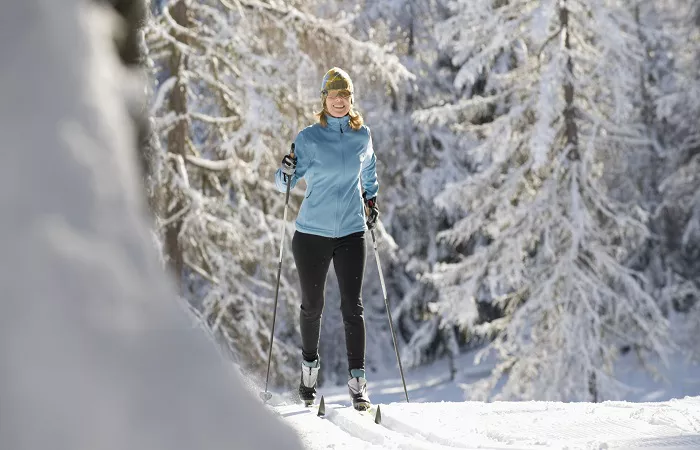Skiing is an intense outdoor activity often performed in harsh winter conditions. Cold weather poses several challenges to the human body. Exposure to low temperatures, wind chill, and moisture can lead to hypothermia, frostbite, and decreased physical performance. Understanding these risks is vital to dressing correctly for skiing.
How Weather Conditions Affect Skiing Comfort and Safety
Temperature alone does not dictate how cold you feel. Wind speed, humidity, and precipitation affect thermal comfort drastically. Wind can strip away the thin layer of warm air around your skin, increasing heat loss. Wet snow or rain can soak your clothes, leading to rapid cooling. Therefore, dressing to protect against all elements is essential for safety and comfort.
Key Principles of Dressing for Skiing in Cold Weather
The Importance of Layering
Layering is the cornerstone of skiing attire. It allows flexibility to adjust to changing weather and exertion levels. Layers trap warm air close to your body and help manage moisture. The three main layers are:
- Base Layer: Wicks moisture away from the skin
- Mid Layer: Provides insulation
- Outer Layer: Protects against wind, snow, and rain
Choosing Breathable and Waterproof Fabrics
Materials matter. Breathability ensures sweat escapes to prevent dampness inside your clothing. Waterproof fabrics block snow and water from soaking through. Modern ski wear uses fabrics like Gore-Tex, eVent, and similar membranes that balance waterproofing and breathability effectively.
Detailed Breakdown of Ski Clothing Components
Base Layer: The First Defense Against Cold
The base layer sits closest to your skin. It must keep you dry by wicking sweat away quickly. Avoid cotton, which traps moisture and chills the body. Instead, choose:
- Merino Wool: Natural fiber with excellent insulation and odor resistance
- Synthetic Fabrics (Polyester, Nylon): Lightweight and fast drying
Fit is also crucial. Base layers should be snug but not restrictive, ensuring moisture moves efficiently.
Mid Layer: The Insulation Barrier
The mid layer traps warm air. It can be adjusted or removed if you get too warm. Popular mid layers include:
- Fleece Jackets: Lightweight, breathable, and warm
- Down or Synthetic Insulation Jackets: Offer higher warmth-to-weight ratios, best for very cold conditions
When skiing in extremely cold weather, consider combining a fleece with a lightweight insulated jacket for better warmth.
Outer Layer: Protection from the Elements
The outer layer shields you from wind, snow, and moisture. It should be:
- Waterproof: To prevent snow and water infiltration
- Windproof: To block cold gusts
- Breathable: To allow sweat vapor to escape
Ski jackets and pants often have sealed seams and adjustable features like cuffs, hoods, and ventilation zippers. These elements help maintain warmth and comfort.
Additional Clothing Items for Cold Skiing
Gloves and Mittens
Hands lose heat rapidly. Choose insulated, waterproof gloves or mittens designed specifically for skiing. Mittens are warmer but less dexterous than gloves. Consider glove liners for added warmth.
Hats and Helmets
The head accounts for significant heat loss. Wear a warm hat under your helmet, preferably made of wool or synthetic fleece. Helmets add protection and some insulation but must fit properly to avoid cold spots.
Socks
Wear ski-specific socks made from merino wool or synthetic blends. Avoid cotton socks that hold moisture. Socks should be thick enough to insulate but not too bulky to restrict circulation inside your boots.
Neck Gaiters and Balaclavas
Protect exposed skin on the neck and face from wind and frostbite using neck gaiters, scarves, or balaclavas. Choose breathable fabrics to prevent overheating.
Footwear and Accessories
Ski Boots: Fit and Insulation
Ski boots must fit well to maintain warmth and control. Use boots with good insulation and consider heated boot insoles for extremely cold conditions. Avoid boots that are too tight, as poor circulation causes cold feet.
Goggles and Sunglasses
Eye protection is essential against snow glare, UV rays, and wind. Ski goggles with anti-fog coatings and UV protection are recommended. In milder weather, high-quality sunglasses with polarized lenses may suffice.
Practical Tips for Dressing on the Slopes
Adjust Layers Based on Activity Level
Skiing intensity fluctuates. Start with more layers and remove mid or base layers during breaks or intense activity to avoid sweating. Wet clothes increase chill risks.
Stay Dry to Stay Warm
Moisture is the enemy. Change wet gloves, socks, or base layers promptly. Carry extra clothing if possible.
Use Ventilation Features Wisely
Many ski jackets and pants have ventilation zippers to release excess heat. Open them during high exertion and close when resting.
Protect Your Skin
Apply sunscreen on exposed skin to prevent sunburn, as snow reflects UV rays strongly, even in cold weather.
Conclusion
Proper skiing attire balances warmth, moisture management, and protection against elements. Use a layered system: moisture-wicking base, insulating mid layer, and protective outer shell. Add specialized gear like gloves, hats, goggles, and insulated boots. Always adjust clothing to your activity and weather conditions to maintain comfort and safety on the slopes.

